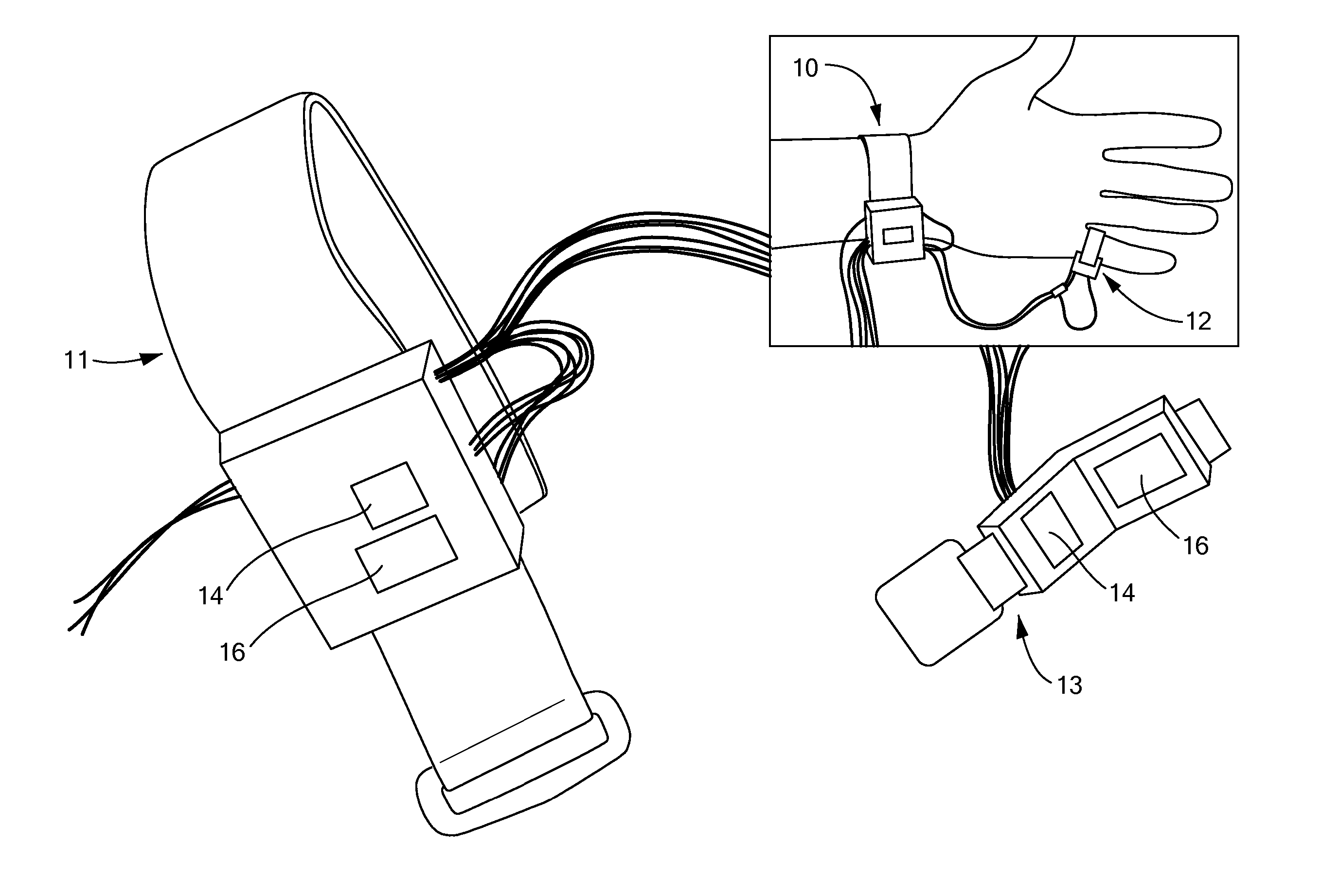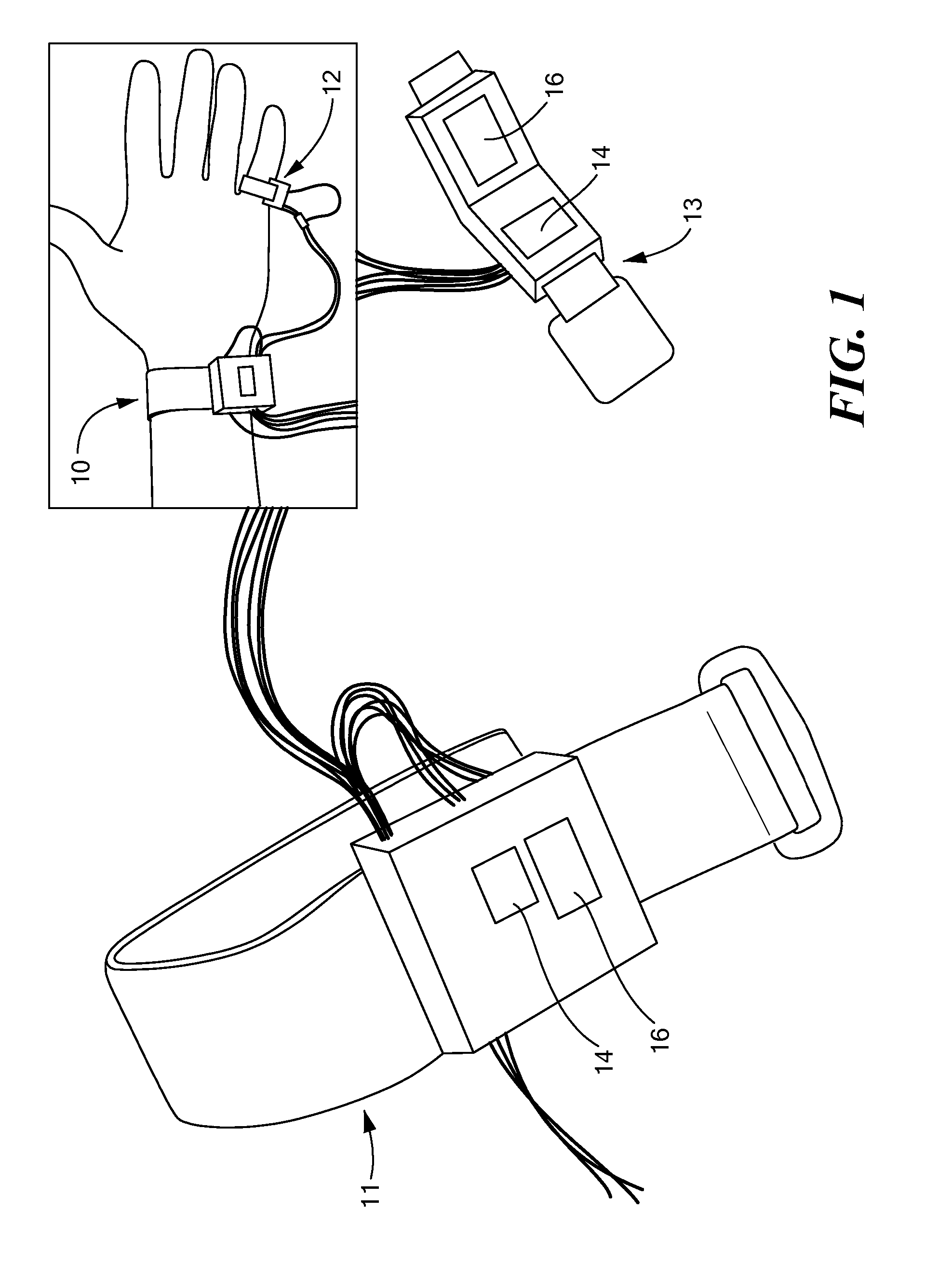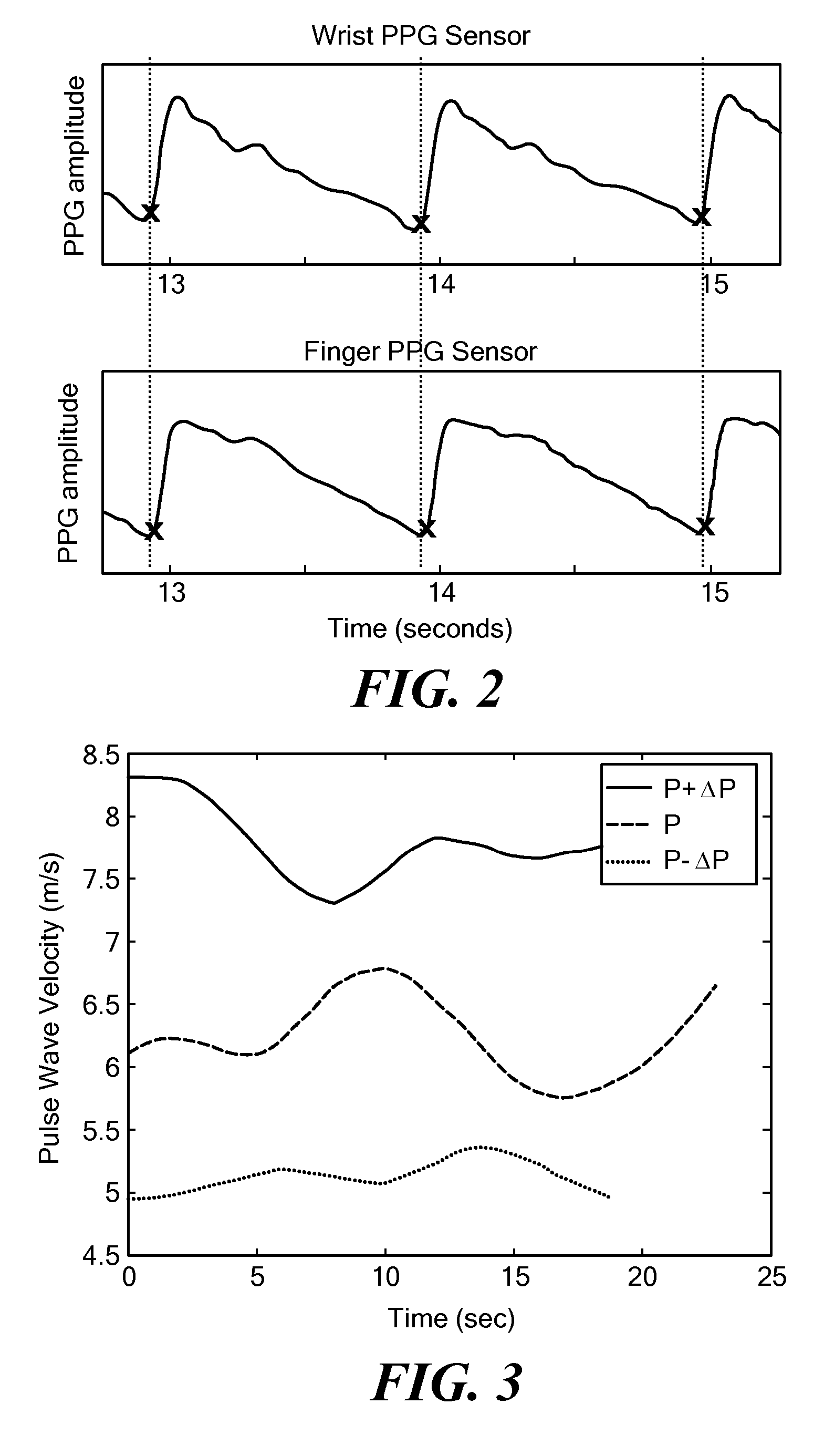Wearable Pulse Wave Velocity Blood Pressure Sensor and Methods of Calibration Thereof
a pulse wave velocity and blood pressure sensor technology, applied in the field of wearable pulse wave velocity blood pressure sensor and methods of calibration thereof, can solve the problems of no optimal solution for truly wearable nibp measurement, no optimal solution for realizing true non-invasive blood pressure (nibp) measurement, and device bulkyness
- Summary
- Abstract
- Description
- Claims
- Application Information
AI Technical Summary
Benefits of technology
Problems solved by technology
Method used
Image
Examples
Embodiment Construction
[0046] In accordance with preferred embodiments of the present invention, a novel wearable device is described for monitoring blood pressure. Blood pressure is one example of an output circulatory metric that is of great clinical value. One embodiment of the invention uses the well-established principle that pulse transmission time (PTT) in an artery depends on blood pressure. In this case, PTT is an example of an “input circulatory metric” that may more readily be obtained by measurement than the blood pressure, which is of greater clinical value. This approach is, in theory, appealing because it does not require any squeezing or other discomforts associated with typical cuff-based devices. Yet, in the past, PTT-based methods have proven less reliable than desirable because compliance (and, hence, PTT) in an artery also changes for reasons other than blood pressure, as discussed above.
[0047] As used herein, and in any appended claims, the term “blood pressure” shall be taken to re...
PUM
 Login to View More
Login to View More Abstract
Description
Claims
Application Information
 Login to View More
Login to View More - R&D
- Intellectual Property
- Life Sciences
- Materials
- Tech Scout
- Unparalleled Data Quality
- Higher Quality Content
- 60% Fewer Hallucinations
Browse by: Latest US Patents, China's latest patents, Technical Efficacy Thesaurus, Application Domain, Technology Topic, Popular Technical Reports.
© 2025 PatSnap. All rights reserved.Legal|Privacy policy|Modern Slavery Act Transparency Statement|Sitemap|About US| Contact US: help@patsnap.com



